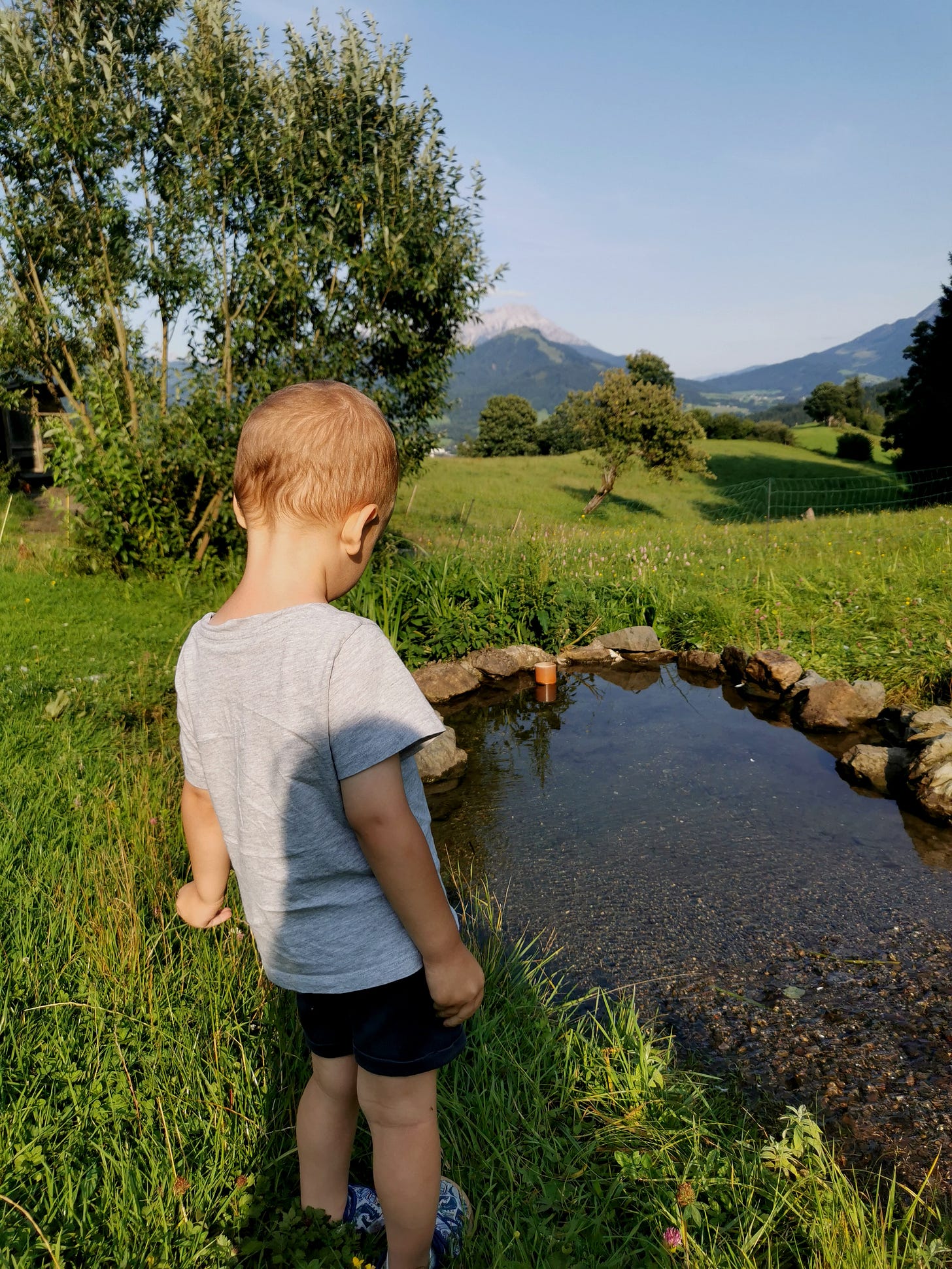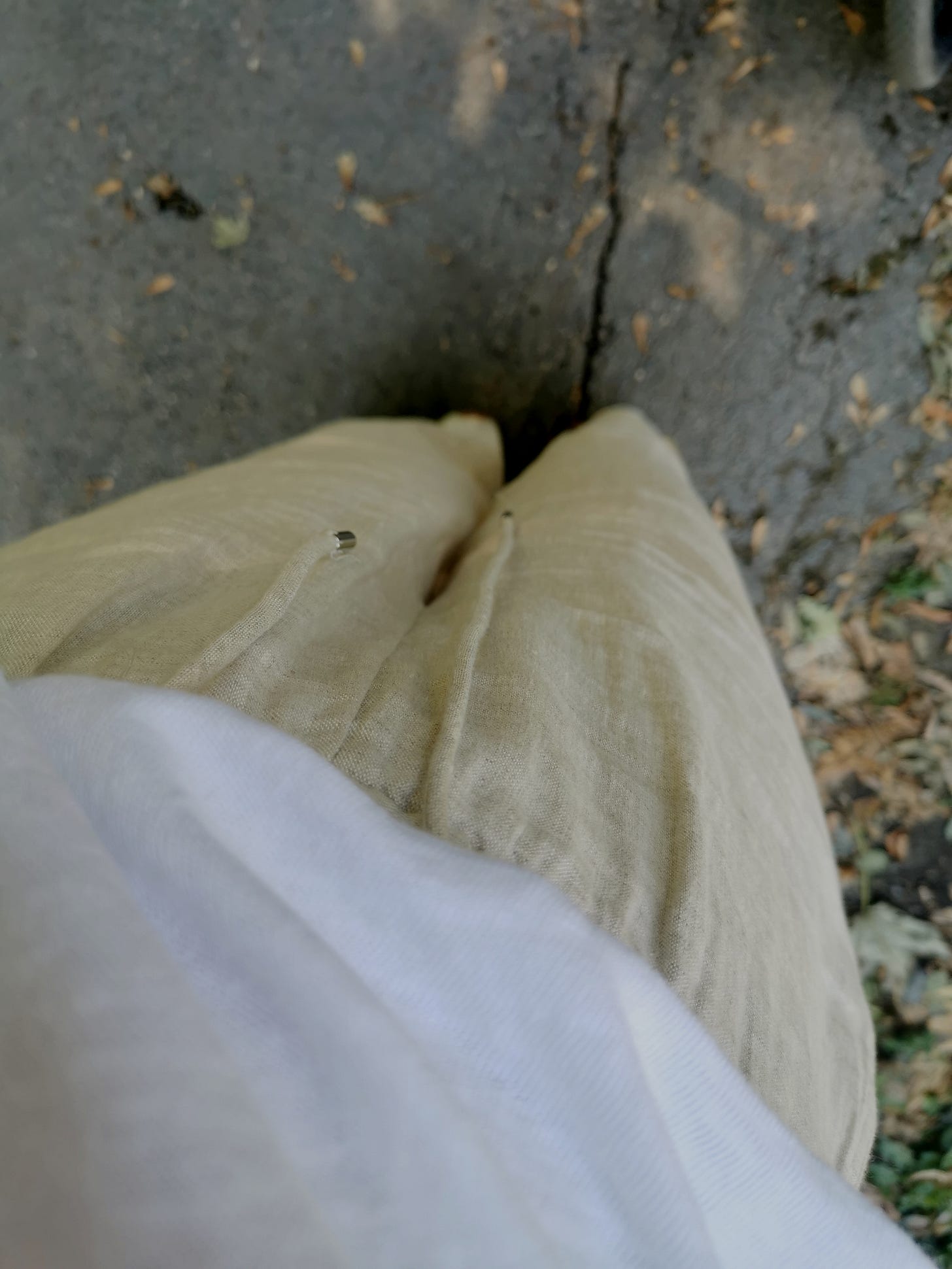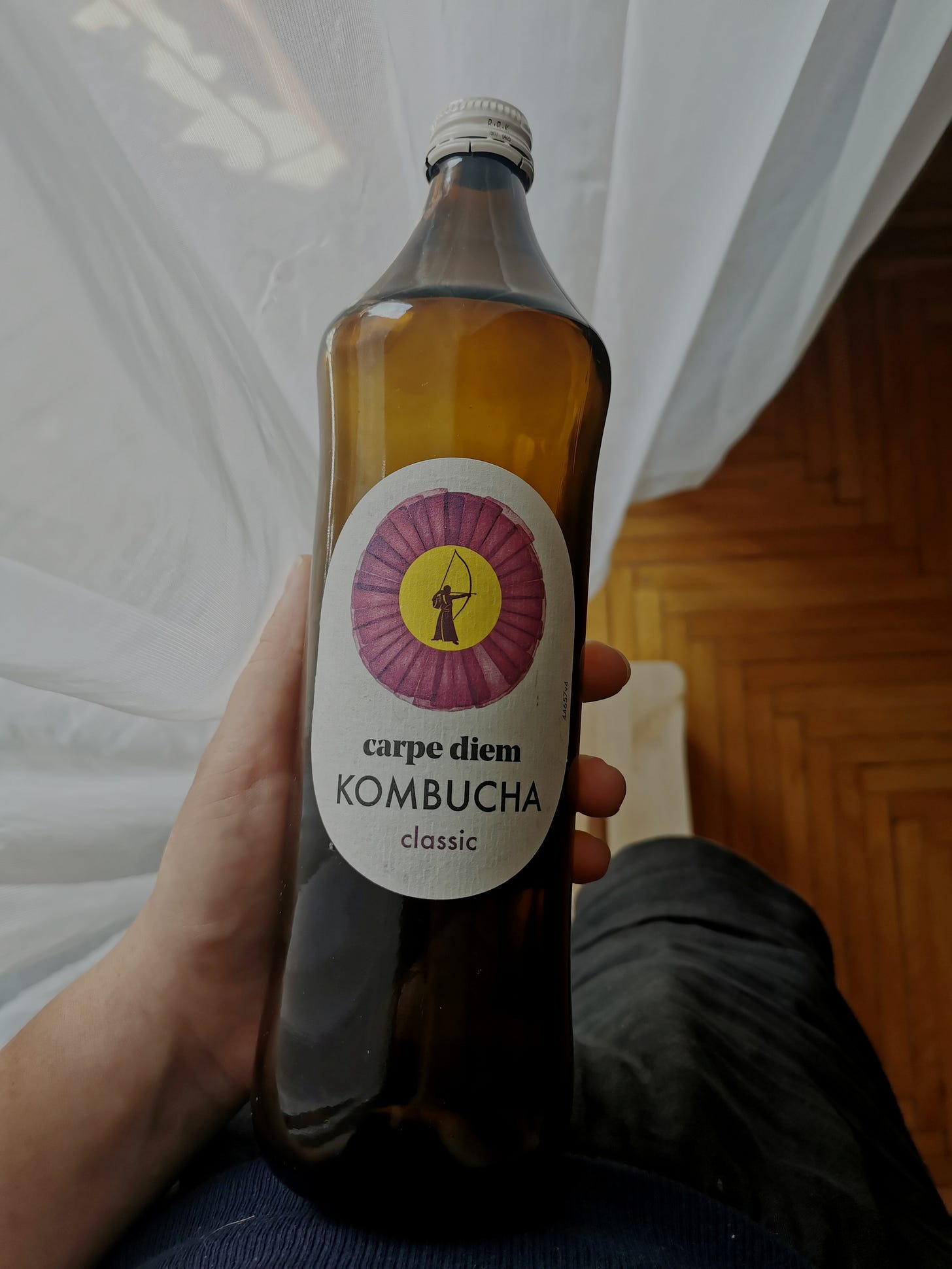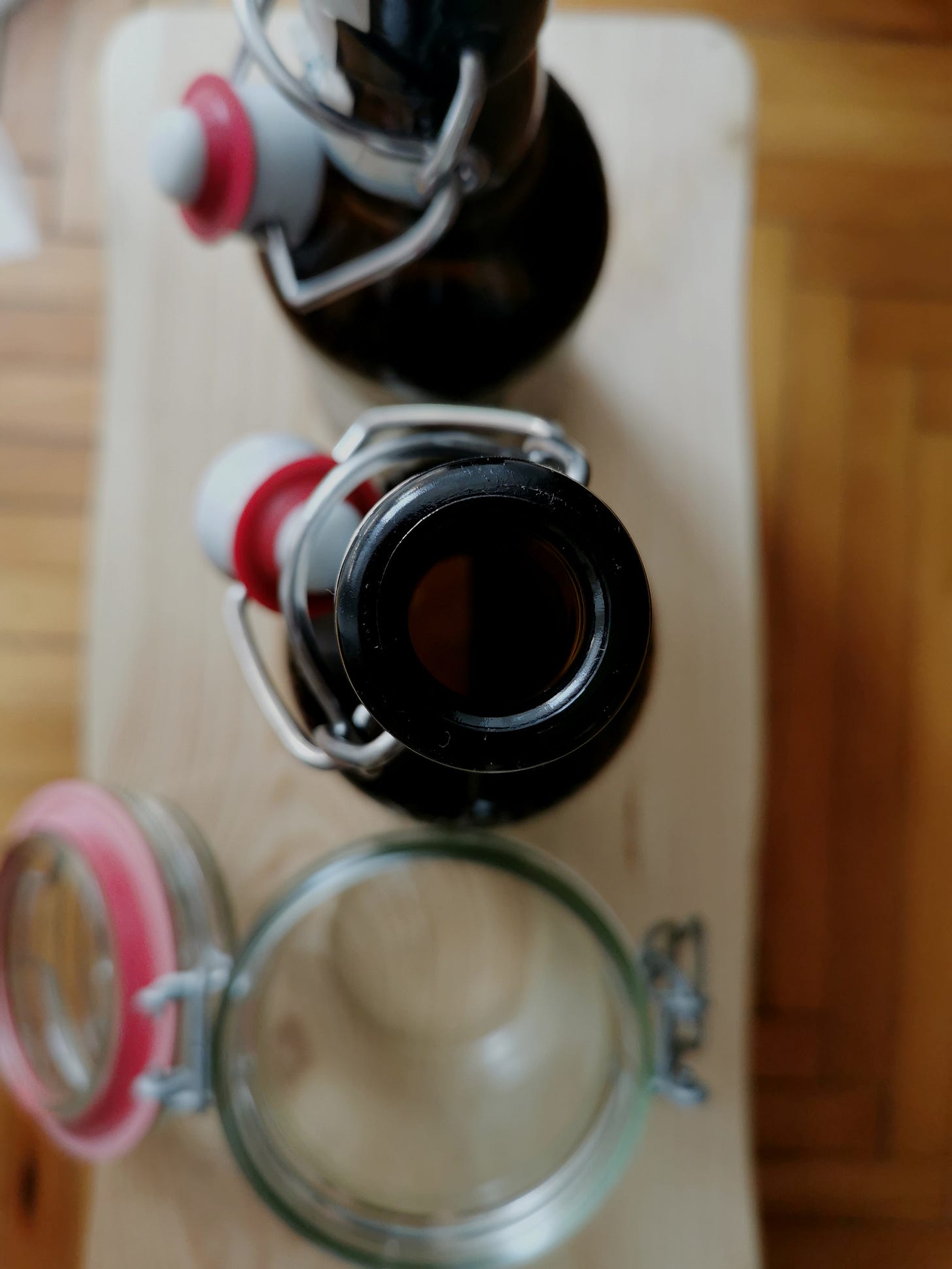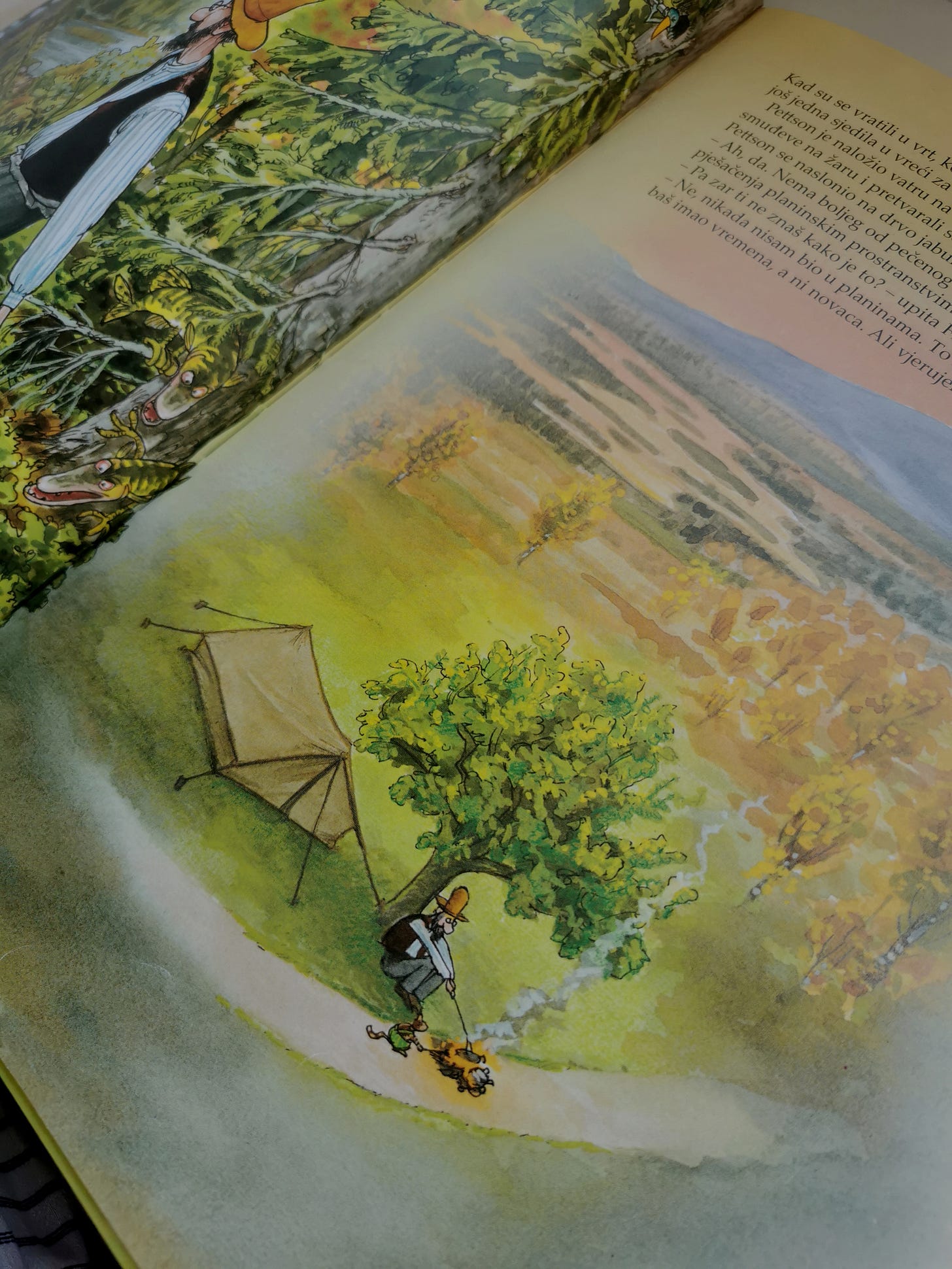Things That Found Me Between the Mountains.
A few small things that found me and stayed.
This time, the mountains found us. We drove for hours, winding up a narrow road that carried us higher and higher until we reached the farm, about a thousand meters above sea level. Around us, the Alps stood tall, grey ridges cut into the clouds. Tops hidden and revealed again with every passing breeze. On the slopes, scattered farms rested quietly, their roofs small against the vastness of the mountains. Among those days, some things found me again.
From the wooden terrace of our little house, I looked out every morning at that view. Below, ducks splashed noisily in a pond, their wings spreading water into small circles. A wooden chicken coop stood nearby, and in the grass, children’s pinwheels spun slowly in the mountain wind. Everything else was still, except the distant sound of cowbells, echoing from the forest. I sat there with a book on my lap, a cup of coffee in my hand. Even the air seemed denser, filled with the scent of wet grass and pine needles after the night’s rain.
These beige linen trousers and the white cotton T-shirt. I had packed little for this trip—only what we truly needed, for the children and for myself. But these shorts followed me everywhere: on the pedal boat at Pillersee, on the cable car up the mountain, on farm walks in the late afternoon sun. Worn and soft, they became part of the rhythm of those days. Their fabric carried the warmth of the sun and the coolness of shade. The white T-shirt, light and simple, was like a shield against the strong mountain sun, and I folded it carefully every evening, ready for the next day. In a way, these clothes were as present in my days as the mountain itself, constant companions of movement and stillness.
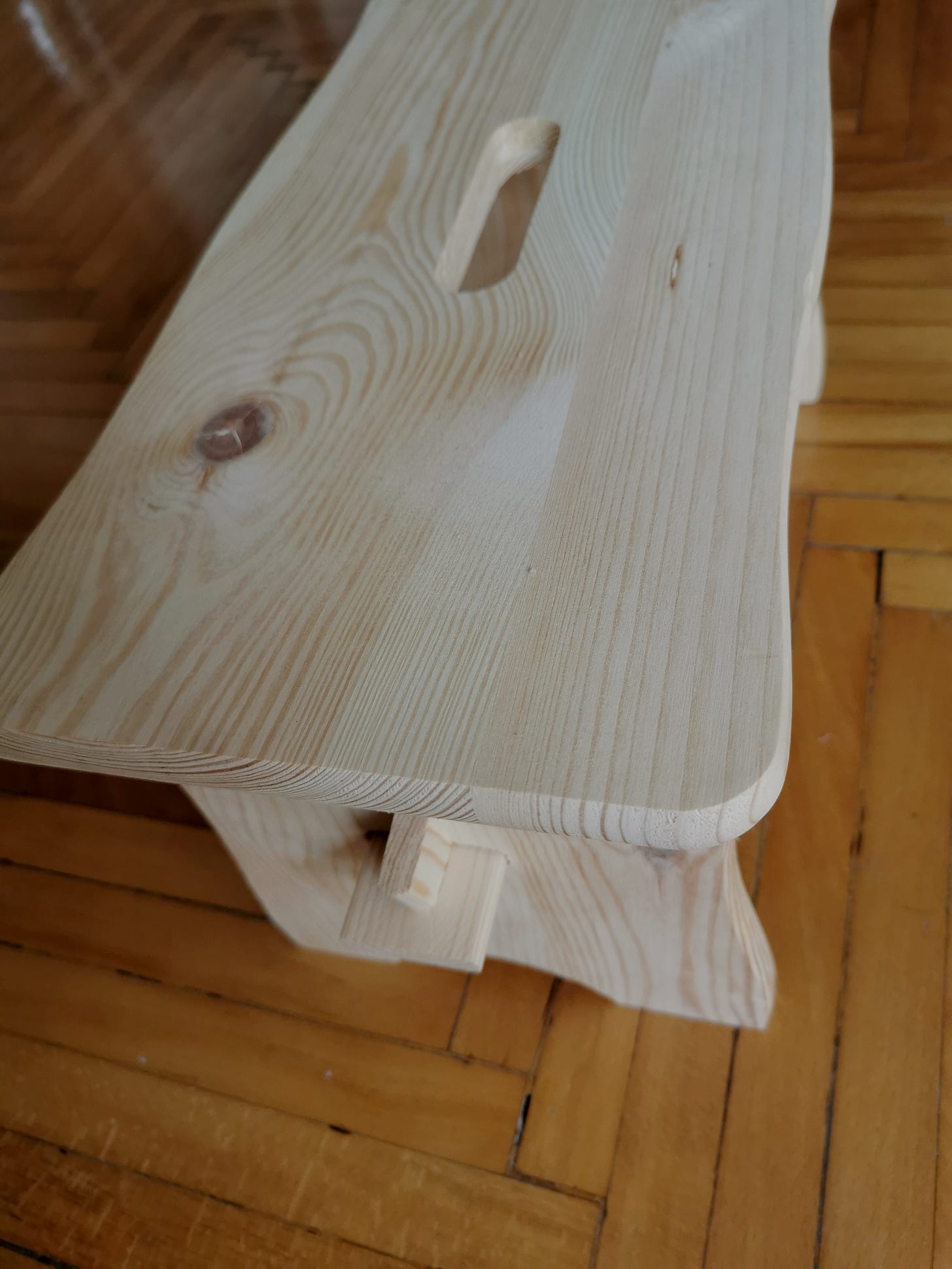
Then, a small wooden chair. Simple, light, just the right size for a child. I found it and decided to bring it back with me. Now it stands in our hallway at home, and my little one sits on it each morning when he puts on his shoes. A piece of the farm, carried into our everyday. The wood still smells faintly of resin, and when I touch it, I remember the terrace and the sound of the ducks. It is not only a chair—it is a memory solidified in shape. I love how such an ordinary object can quietly carry a place within it, bridging there and here.
There was also a glass bottle of kombucha. I tried it for the first time in Austria. Taste is sharp and fizzy, slightly sour with a sweetness that lingered. The label, simple yet striking, showed a delicate archer silhouette framed by a large violet-pink fan, against a yellow sun. It looked almost like a small artwork on glass, something both modern and ancient at the same time. I kept the bottle, brought it home, and washed it clean. It will serve again for homemade syrups, juices, maybe ginger shots in the cold season. I liked that it wasn’t just a drink, but also an object that could be reused, repurposed. The kombucha itself stayed in my memory for its surprising taste, something unusual yet refreshing.

One afternoon, Pillersee lake found us. We rented a pedal boat and drifted slowly, watching the mountains mirrored on the green-blue water. My son steered proudly, while my daughter and I dipped our feet into the icy shallows. Ducks called across the distance. Around the edges of the lake, tall reeds swayed, and behind them, the dark forest leaned close. It was quiet. The light shifted constantly, sometimes making the water shine like glass, other times breaking it into fragments of silver. Later, we styled in the great shade of tall trees. I sat in the grass and breastefeed my little girl, while my little boy swam in the cold lake water with his dad.
In St. Johann, I stumbled across a set of glass bottles at the small market—sturdy ones with metal clasp lids and rubber seals. I bought them and carried them home, already imagining them filled with bright golden turmeric shots, or the pale green of homemade herbal tonics. These bottles weren’t new inventions, but old designs that proved their value over and over again. I liked the thought that they would be part of my kitchen routine, quietly serving and lasting through seasons. They felt like a link between tradition and my own small, simple rituals.
And then, a book — Findus Goes Fishing by Sven Nordqvist. Farmer Pettson wakes in a foul mood and wants to be left alone, but Findus, ever the spirited companion, coaxes him out with a simple promise: let’s go fishing. What follows is a gentle, funny unraveling of grumpiness into play, the kind of story where a boat, a rod, and the hush of water can turn a day around. The illustrations brim with tiny details like stacked wood, pots and tools, a muddle of boots by the door all drawn in Nordqvist’s warm lines and mossy greens, lake-blues, and weather-grey skies. We read it every evening on the terrace.
All these things were simple, ordinary even. A chair, a bottle, a book, a pair of shorts. But they found me there among the mountains, and they have followed me back home, carrying with them the calmness of those Alpine days. The stillness, the repetition, the ease of using and reusing what we have, over and over again. Simplicity, once again, became my greatest souvenir.
PS: I’m keeping all my posts free for now, but if you’d like to support these letters, a free subscription helps me keep going.
Little suggestions:
Notes from across the sea. A letter from out time at the shore, in September. Sweet. slow, autumnal days. Read it here.
One letter about slow days and things that found me at the countryside.




